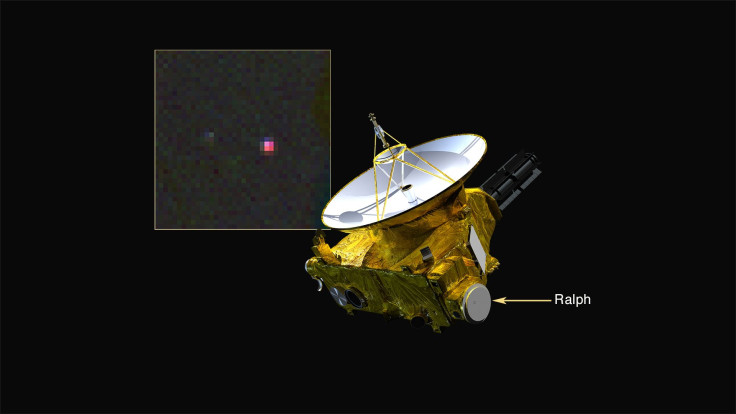NASA’s New Horizons Detects Methane On Pluto’s Surface; Prepares For Sunset, Sunrise Observations

The infrared spectrometer on NASA’s Pluto-bound New Horizons spacecraft has detected frozen methane on the planet’s surface, the federal space agency announced Wednesday. This is the first time that the chemical compound has been identified on Pluto since Earth-based astronomers first observed methane on the planet in 1976.
Methane, an odorless and colorless gas, is present underground and in Earth's atmosphere. In Pluto's case, astronomers believe that methane could have a primordial origin, and is likely inherited from the solar nebula from which the solar system came into existence about 4.5 billion years ago.
“We already knew there was methane on Pluto, but these are our first detections,” Will Grundy, the New Horizons Surface Composition team leader with the Lowell Observatory in Flagstaff, Arizona, said in a statement. “Soon we will know if there are differences in the presence of methane ice from one part of Pluto to another.”
New Horizons, launched on Jan. 19, 2006, is currently about 10 million miles from Pluto and nearly 2.95 billion miles from Earth. The spacecraft, which is set for its first flyby of Pluto on July 14, is also preparing for its upcoming observations of the planet’s tenuous atmosphere. Just hours after its flyby of Pluto, New Horizons will observe sunlight passing through Pluto's atmosphere to help scientists determine its atmosphere’s composition, according to NASA.
On Tuesday night, New Horizons sped up and tweaked its path toward Pluto as part of its final planned maneuver of the spacecraft’s approach to the planet, according to astronomers.
On its way to the Pluto system, New Horizons recently provided the first “near-true color” images of Pluto and its moon Charon. The photographs were assembled from images made in three colors -- blue, red and near-infrared -- taken on nine different occasions between May 29 and June 3.
Last month, images of Pluto obtained by New Horizons revealed that the planet is a complex world of both bright and dark terrain. Scientists expect to get more information about Pluto and its moons as New Horizons comes closer to its July flyby.
© Copyright IBTimes 2024. All rights reserved.






















